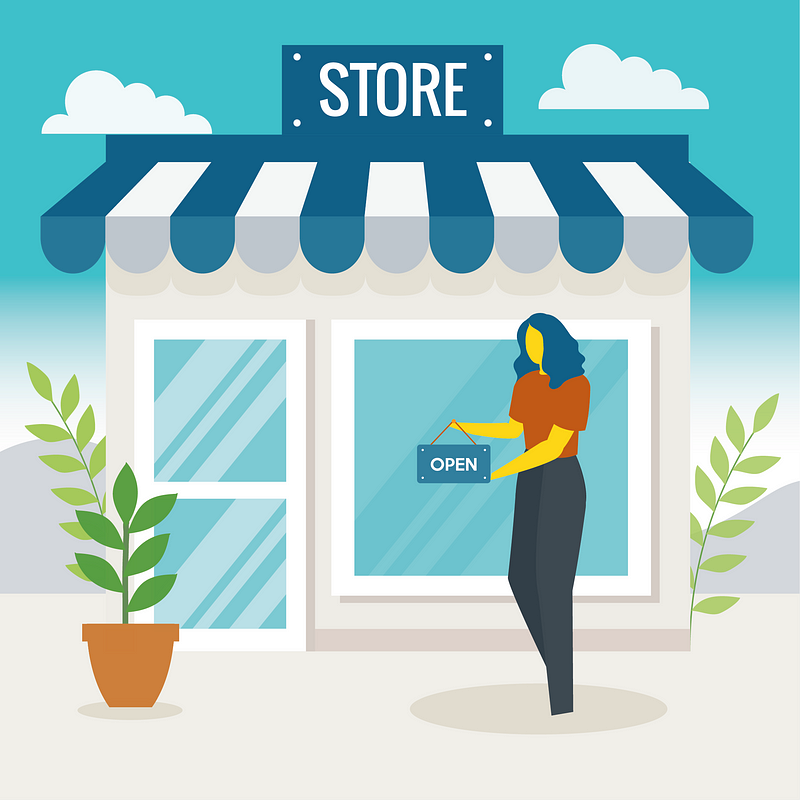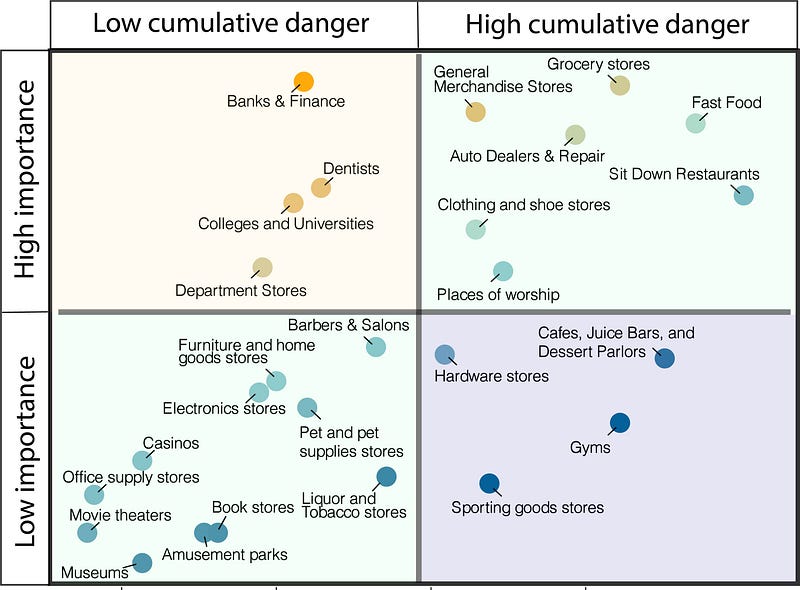Facing COVID-19, Some Businesses Should Reopen Before Others
During a pandemic, research shows not all locations ought to be treated the same.
Based on the research of Avinash Collis

As states across the country implement individualized reopening plans during the coronavirus pandemic, policymakers may want to place looser restrictions on places with a lower health risk and higher social benefit such as banks, grocery stores, dentist offices, and universities. That stands in stark contrast to spots such as liquor stores, gyms and sporting goods stores, which are riskier and offer comparatively less value, according to new research from Texas McCombs.
During the pandemic, Avinash Collis, assistant professor of information, risk, and operations management, has seen that states are not explaining how they calculated why a particular place should be open or closed. “It’s been quite opaque,” says Collis. He and his research colleagues wanted to provide policymakers with a framework for looking at both costs and benefits so they could follow a more data-driven approach.
He set out to demonstrate this trade-off between the risk of getting infected with the coronavirus when at an establishment and the business’s value to our lives and the economy. Collis and his co-authors Seth Benzell from the Massachusetts Institute of Technology and Christos Nicolaides from MIT and the University of Cyprus analyzed 26 categories of location type in February and March. The researchers created a graded risk-benefit rubric, from the most beneficial locations with low risk, to the least beneficial with high risk.
Measuring Collective Danger
Their danger index used mobility data from 47 million smartphones in the United States. Data recorded visits to 6 million points of interest and covered nine criteria, including the total number of visits to a type of location, unique visitors, and the length of visits during moderately and very crowded times.
“We weren’t trying to measure how dangerous a location is for an individual to visit, but rather from the whole country or the whole state point of view.” — Avinash Collis
To measure the benefits of a location, the researchers assessed economic information from U.S. census data, including the total number of people employed at each location, wages paid, and locations’ total revenues. Those businesses represented 1.43 million companies, 32 million employees, $5.6 trillion in revenues, and $1.1 trillion in payroll.
The authors also conducted a survey to determine how much value consumers derive from different locations. The 1,099 U.S. residents they polled on their preferences were recruited through a market research firm.
“We asked people to make choices,” Collis says. “Do you want a grocery store or a movie theater to open first?” The researchers combined the economic information with the survey data to create a benefits index.

Risk of Gyms and Juice Bars
The authors found that banks and dentists come out on top, offering the most economic and social benefit and the lowest risk. Colleges, places of worship, auto dealers, big box stores such as Target and Walmart, and auto repair shops are also among locations that are less dangerous and also either socially or economically important.
Gyms, cafes, liquor and tobacco stores, juice bars, and dessert parlors, however, pose a higher risk with fewer benefits because they’re often smaller locations that can easily get crowded, and they often employ overall fewer people.
“If a location provides a lot of benefits with few costs, then they should be the first to open up. But if they don’t offer a lot of benefits, they should probably be opened up later.” — Avinash Collis
Collis and his colleagues found that colleges and universities are also good candidates for reopening first because they’re more spread out and therefore less dangerous, while their benefits are numerous. “Not only to students, but to entire local economies,” Collis says. (The study didn’t measure how students behave in smaller spaces such as dorms, and how colleges would manage those interactions.)
“If colleges and universities do reopen, they should do comprehensive testing,” Collis says, among other measures that have been shown to be effective in preventing the spread of the virus, such as mask wearing and social distancing.
The researchers also found that trade-offs were nearly the same in rural and urban areas, “suggesting that the urban-rural divide is not an important dimension for policymakers,” according to the paper.
Individual Decisions
For the most part during February and March, the majority of Americans inherently followed what the researchers found, says Collis. They avoided more dangerous and less socially and economically beneficial businesses as the pandemic escalated.
However, there were exceptions. Liquor and tobacco store visits dropped by only less than 5%. That’s compared with colleges, which are safer and more beneficial, yet saw a 61% decline in visits as many universities shut down and sent students home.
The study also has its limitations. Researchers didn’t look at linkages between industries to see how shutting down one type of location might impact another. The study’s sample size was also small. Further research should use a major survey research firm and a larger sample size, says Collis.
Safety measures that businesses and organizations have put in place since March could also change how dangerous a location is. For example, many businesses have installed plexiglass barriers around cashiers, limited the number of customers inside the store, and required staff members and customers to wear masks. “We’ll have to see how locations evolve,” Collis says.
The researchers say they hope policymakers will consider the findings while continuing to plan and assess reopenings. But even if they don’t, individuals can use the data themselves.
“In February and March, many places were still open, but a lot of people stopped visiting the ones they considered to be dangerous,” says Collis. “Now, even if policies aren’t enacted, you can calculate the risk on your own.” So even if your gym and juice bar open up, you can exercise at home and squeeze your own juice.
“Rationing Social Contact During the COVID-19 Pandemic: Transmission Risk and Social Benefits of U.S. Locations” is published online in advance in the Proceedings of the National Academy of Sciences.
Story by Deborah Lynn Blumberg


